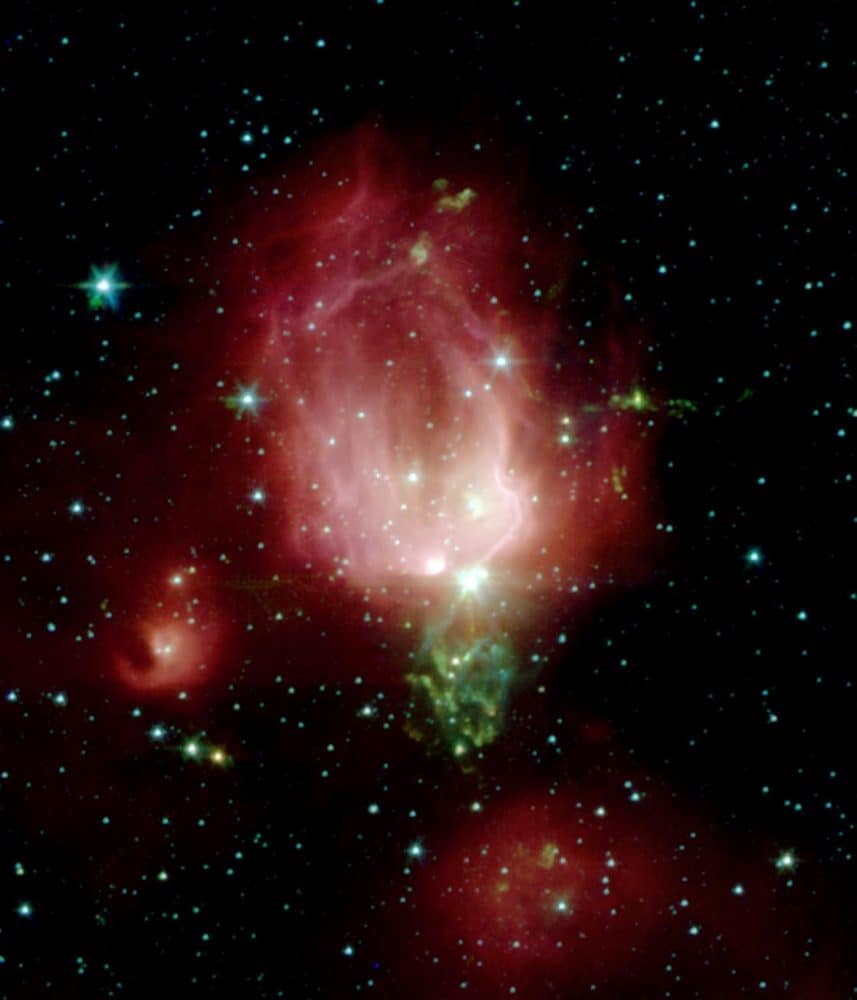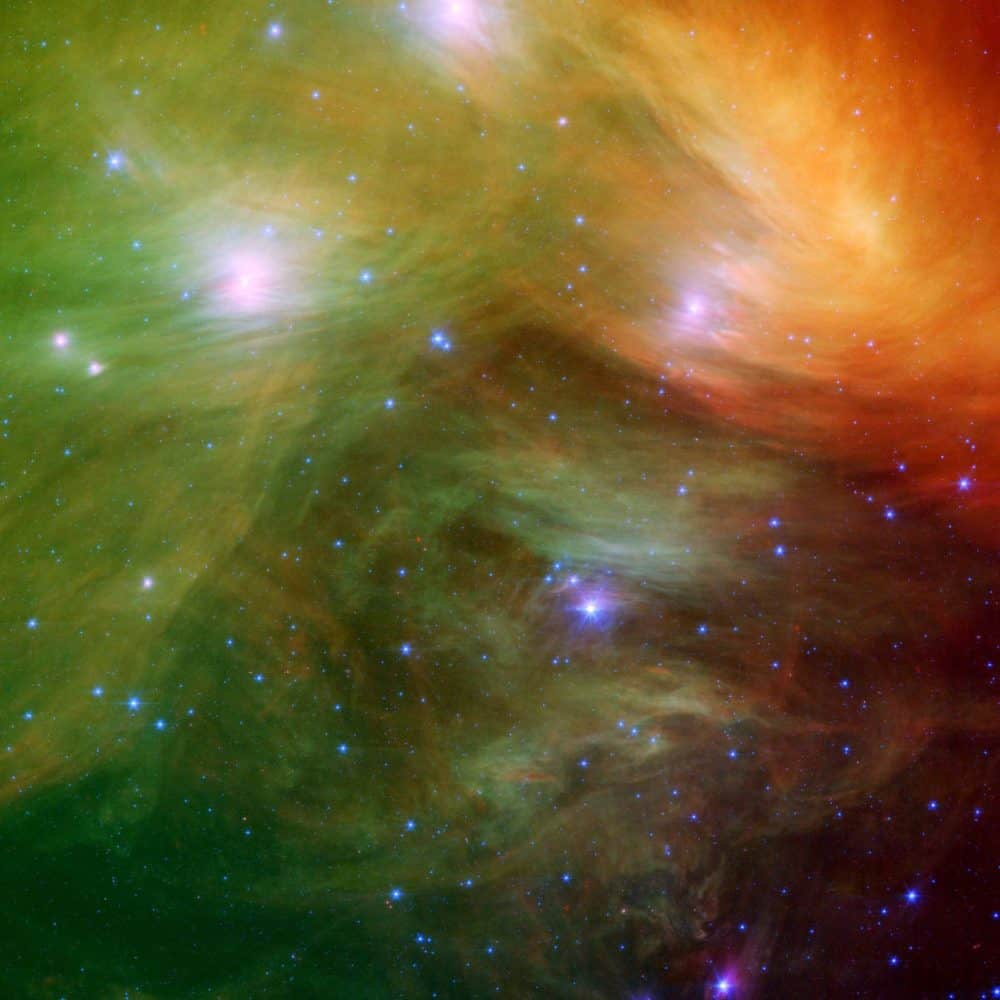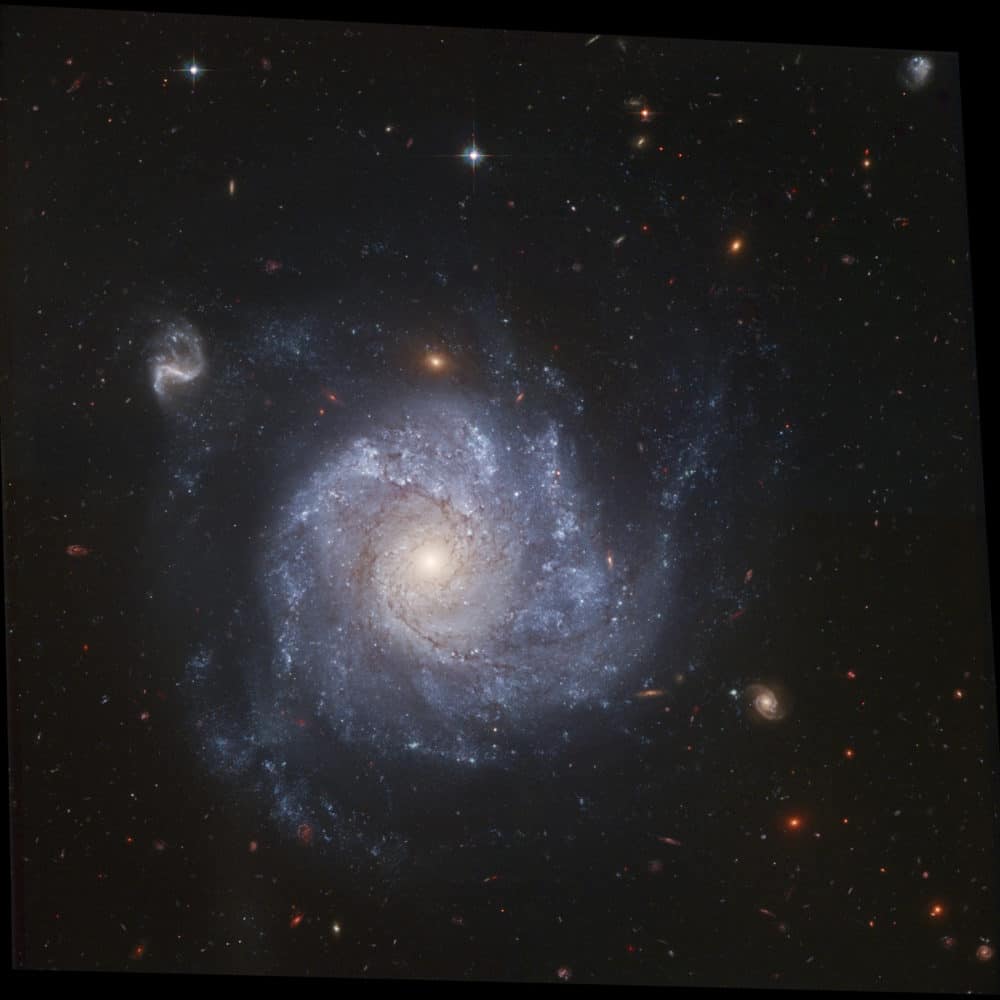Blog
Donald Matthew Redman (July 29, 1900 – November 30, 1964) was an American jazz musician, arranger, bandleader, and composer. Redman was born in Piedmont, Mineral County, West Virginia. His father was a music teacher, his mother was a singer. Don began playing the trumpet at the age of three, joined his first band at the age of six and by the age of 12 was proficient on all wind instruments ranging from trumpet to oboe as well as piano. He studied at Storer College in Harper’s Ferry and at the Boston Conservatory, then joined Billy Page’s Broadway Syncopaters in New York City. (He was the uncle of saxophonist Dewey Redman, and thus great-uncle of saxophonist Joshua Redman and trumpeter Carlos Redman.) In 1923, Redman joined the Fletcher Henderson orchestra, mostly playing clarinet and saxophones.
He began writing arrangements, and Redman did much to formulate the sound that was to become swing. A trademark of Redman’s arrangements was the band playing harmony under written solos.
more...NGC 7129 is a reflection nebula located 3,300 light years away in the constellation Cepheus. A young open cluster is responsible for illuminating the surrounding nebula. A recent survey indicates the cluster contains more than 130 stars less than 1 million years old. NGC 7129 is located just half a degree from nearby cluster NGC 7142.
The nebula is rosebud-shaped; the young stars have blown a large, oddly shaped bubble in the molecular cloud that once surrounded them at their birth. The rosy pink color comes from glowing dust grains on the surface of the bubble being heated by the intense light from the young stars within. The ultra-violet and visible light produced by the young stars is absorbed by the surrounding dust grains. They are heated by this process and release the energy at longer infrared wavelengths as photographed by the Spitzer Space Telescope. The reddish colors in the false-colour infrared image suggest the distribution of hydrocarbon rich molecular material.
The much cooler molecular cloud outside the bubble is mostly invisible to Spitzer. However, three very young stars near the center of the nebula are sending jets of supersonic gas into the cloud. The collision of these jets heats carbon monoxide molecules in the nebula. This produces the complex nebulosity that appears like a stem of a rosebud.
more...
Michael Bernard Bloomfield (July 28, 1943 – February 15, 1981) was an American guitarist and composer, born in Chicago, Illinois, who became one of the first popular music superstars of the 1960s to earn his reputation almost entirely on his instrumental prowess, since he rarely sang before 1969. Respected for his guitar playing, Bloomfield knew and played with many of Chicago’s blues legends before achieving his own fame and was instrumental in popularizing blues music in the mid-1960s. He was ranked No. 22 on Rolling Stone‘s list of “100 Greatest Guitarists of All Time” in 2003 and No. 42 by the same magazine in 2011. He was inducted into the Blues Hall of Fame in 2012 and, as a member of the Paul Butterfield Blues Band, was inducted into the Rock and Roll Hall of Fame in 2015.
Bloomfield was born into a wealthy Chicago Jewish-American family. Bloomfield’s father, Harold Bloomfield, was born in Chicago in 1914. After pursuing business ventures in California during the 1920s, he returned to the city in the early 1930s. Harold Bloomfield began manufacturing restaurant supplies, and by the latter part of the decade his company, Bloomfield Industries, was making pie cases, kitchen utensils, salt and pepper shakers, and sugar pourers. By the early 1940s Bloomfield Industries had acquired more manufacturing and warehouse space. The company expanded during World War II by manufacturing supplies needed for the war effort. Working with his brother, Daniel, and his father, Samuel, Harold Bloomfield built up Bloomfield Industries into a thriving business. Michael Bloomfield’s mother was born Dorothy Klein in Chicago in 1918 and married Harold Bloomfield in 1940. She came from an artistic, musical family, and worked as an actor and a model before marrying Bloomfield.
more...
Charles Reed “Charlie” Biddle, CM (July 28, 1926 – February 5, 2003) was an American-Canadian jazz bassist. He lived most of his life in Montreal, organizing and performing in jazz music events.
Biddle was born and grew up in West Philadelphia. He served in the United States Armed Forces during World War II, serving in China, India and Burma. After the war, he studied music at Temple University in Philadelphia, where he started playing bass.
In 1948, Biddle arrived in Montreal while touring with Vernon Isaac’s Three Jacks and a Jill. Biddle was impressed by the fact that in Canada, particularly Quebec, black jazz musicians often played alongside white jazz musicians as friends and bandmates. He decided to settle down in Montreal, and fell in love with a French-Canadian woman, Constance. The two eventually married and raised three daughters – Sonya, Stephanie and Tracy – and a son, Charles Biddle Jr.
Biddle was employed as a car salesman from 1954 to 1972, while performing with pianists Charlie Ramsey, Milt Sealey, Alfie Wade, Sadik Hakim, and Stan Patrick in local Montreal nightclubs. He became a promoter, and booked musicians Johnny Hodges, John Coltrane, Pepper Adams, Bill Evans, Art Farmer, Tommy Flanagan and Thad Jones to perform in Montreal. He performed occasionally with guitarist Nelson Symonds between 1959 and 1978. Between 1961 and 1963 the pair performed together under Biddle’s leadership at Dunn’s and La Tête de l’Art, and under Symonds’ leadership at the Black Bottom from 1964 to 1968. As a duo they performed at several resort communities in the Laurentians between 1974 and 1978.
more...David “Junior” Kimbrough (July 28, 1930 – January 17, 1998) was an American blues musician. His best-known works are “Keep Your Hands off Her” and “All Night Long”. Kimbrough was born in Hudsonville, Mississippi, and lived in the north Mississippi hill country near Holly Springs. His father, a barber, played the guitar, and Junior picked his guitar as a child. He was apparently influenced by the guitarists Lightnin’ Hopkins, Mississippi Fred McDowell and Eli Green (who had a reputation as a dangerous voodoo man).
In the late 1950s Kimbrough began playing the guitar in his own style, using mid-tempo rhythms and a steady drone played with his thumb on the bass strings. This style would later be cited as a prime example of hill country blues. His music is characterized by the tricky syncopation between his droning bass strings and his midrange melodies. His soloing style has been described as modal and features languorous runs in the middle and upper registers. The result was described by music critic Robert Palmer as “hypnotic”. In solo and ensemble settings it is often polyrhythmic, which links it to the music of Africa. North Mississippi bluesman and former Kimbrough bassist Eric Deaton suggested similarities between Kimbrough’s music and that of Fulani musicians such as Ali Farka Touré. The music journalist Tony Russell wrote that “his raw, repetitive style suggests an archaic forebear of John Lee Hooker, a character his music shares with that of fellow North Mississippian R. L. Burnside“.
In 1966 Kimbrough traveled to Memphis, Tennessee, to record for Goldwax Records, owned by the R&B and gospel producer Quinton Claunch. Claunch was a founder of Hi Records and is known as the man who gave James Carr and O.V. Wright their starts. Kimbrough recorded one session at American Studios.
more...https://www.youtube.com/watch?v=7Ot_xyUU2lA
more...The Merope Nebula (also known as Tempel’s Nebula and NGC 1435) is a diffuse reflection nebula in the Pleiades star cluster, surrounding the 4th magnitude star Merope. It was discovered on October 19, 1859 by the German astronomer Wilhelm Tempel. John Herschel, in his New General Catalogue(NGC), described it as a very faint nebula about the size of the full moon.
The Merope Nebula has an apparent magnitude starting at 13 and quickly dimming by a factor of about 15, making most of the nebula dimmer than magnitude 16. It is illuminated entirely by the star Merope, which is embedded in the nebula. It contains a bright knot, IC 349, about half an arcminute wide near Merope. It appears blue in photographs because of the fine carbon dust spread throughout the cloud. Though it was once thought the Pleiades formed from this and surrounding nebulae, it is now known that the Pleiades nebulosity is caused by a chance encounter with the cloud.
A small and unique nebula which is close to Merope was discovered by Edward Emerson Barnard in November 1890. It is naturally very bright but is almost hidden in the radiance of Merope. Distance 440 ly.
more...Edward Simon (born July 27, 1969) is a Venezuelan jazz pianist and composer.
Simon was born in Punta Cardón, Venezuela. When he was ten years old, he went to the United States of America to study at the Performing Arts School in Philadelphia. After graduating, he attended the University of the Arts in Philadelphia, where he studied classical piano, then the Manhattan School of Music, where he studied jazz piano.
In 1988, he recorded as a sideman with Greg Osby, then worked as a member of the band Horizon led by Bobby Watson. For the next eight years he was a member of Terence Blanchard‘s band. He has also worked with Herbie Mann, Paquito D’Rivera, Bobby Hutcherson, Jerry Gonzalez, John Patitucci, Arturo Sandoval, Manny Oquendo, and Don Byron. Simon recorded Beauty Within (AudioQuest, 1994), his first album as a bandleader, with Horacio Hernández and bass guitarist Anthony Jackson. During the same year, he was a finalist in the Thelonious Monk International Jazz Piano Competition. Then the following year he composed Rumba Neurotica for the Relache Ensemble.
more...
Jean Toussaint (born July 27, 1960) is an American jazz tenor and soprano saxophonist.
Toussaint was born in Saint Thomas, U.S. Virgin Islands, and was raised in Saint Thomas and New York City. He learned to play calypso as a child and attended Berklee College of Music in the late 1970s, studying under Bill Pierce (saxophonist). In 1979 he formed a group with Wallace Roney and from 1982 to 1986 was a member of Art Blakey and the Jazz Messengers alongside Terence Blanchard, Donald Harrison, Mulgrew Miller and Lonnie Plaxico. With Blakey he recorded three studio albums, including New York Scene, which won a Grammy for Best Jazz Instrumental Performance.
In 1987, Toussaint moved to London when was he invited to be artist-in-residence at the Guildhall School of Music by Lionel Grigson, at the time the school’s professor of jazz. In the late 1980s Toussaint had a regular slot at the fabled Dingwalls club in Camden Town on Sunday afternoons. Since then, Toussaint has maintained a profile as a band leader in the UK and Europe, playing with British musicians including, among others, Steve Williamson, Courtney Pine, Julian Joseph, Jason Rebello, Cleveland Watkiss. He has also performed in groups led by McCoy Tyner, Gil Evans, Kirk Lightsey, Cedar Walton, Max Roach, Horace Silver and Jeff Tain Watts. In addition he has collaborated with Lionel Loueke.
Toussaint has released ten albums as a leader, his most recent entitled Tate Song in February 2014 with LYTE Records.
In 2015/16 Toussaint devised a project dedicated to his mentor Blakey. The project was entitled ‘Roots & Herbs: The Blakey Project’ and featured an All-Star Lineup of British Jazz Musicians, including Julian Joseph, Byron Wallen, Dennis Rollins, Jason Rebello and Shane Forbes. The group toured the UK extensively throughout 2015 / 2016.
more...Moses Rascoe (born July 27, 1917 in Windsor, NC, died March 6, 1994 in Lebanon, PA) got his first guitar in North Carolina at the age of 13 and turned professional in Pennsylvania some 50-odd years later. In between, he traveled the roads as a day laborer and truck driver, playing guitar only for “a dollar or a drink,” as he told Jack Roberts in Living Blues. But he’d picked up plenty of songs over the years, from old Brownie McGhee Piedmont blues to Jimmy Reed‘s ’50s jukebox hits, and when he retired from trucking at the age of 65, he gave his music a shot. The local folk-music community took notice, as did blues and folk festivals from Chicago to Europe. Rascoerecorded his first album live at Godfrey Daniels, a Pennsylvania coffeehouse, in 1987.
more...NGC 1309 is a spiral galaxy located approximately 120 million light-years away, appearing in the constellation Eridanus. It is about 75,000 light-years across, and is about 3/4s the width of the Milky Way. Its shape is classified as SA(s)bc, meaning that it has moderately wound spiral arms and no ring. Bright blue areas of star formation can be seen in the spiral arms, while the yellowish central nucleus contains older-population stars. NGC 1309 is one of over 200 members of the Eridanus Group of galaxies.
more...Jonathan “Juanito” Pascual (born July 26, 1973) is an American-born flamenco guitarist and composer.
In 2011 Pascual formed the Juanito Pascual New Flamenco Trio with percussionist Tupac Mantilla, and bassist Brad Barrett (Haggai Cohen Milo, in the first iteration). The Trio’s self-titled release came out in Feb. 2014, creating a sound that merges flamenco with elements of jazz, rock and world-music influences.
He has collaborated with numerous environmental projects, and has an ongoing relationship with Earth Train and their Junglewood project in the Panamanian rain forest. In fall of 2013 he was invited to perform at Panama’s Biodiversity Museum in association with National Geographic to celebrate Earth Train’s collaboration with Jane Goodall.
A graduate with honors from Boston’s New England Conservatory of Music from their Contemporary Improvisation program in 1997.
more...Joanne Brackeen (born Joanne Grogan; July 26, 1938) is an American jazz pianist and music educator. Joanne Grogan was born in Ventura, California and attended the Los Angeles Conservatory of Music. She was a fan of pop pianist Frankie Carle before she became enamored with the music of Charlie Parker. In the 1950s she performed with Dexter Gordon, Teddy Edwards, and Charles Brackeen. She and Brackeen married and moved to New York City in 1965. She performed with Chick Corea, Freddie McCoy, and Ornette Coleman.
She played with Joe Henderson (1972–75) and Stan Getz (1975–77) before leading her own trio and quartet. Brackeen established herself as a cutting edge pianist and composer through her appearances around the world, and her solo performances also cemented her reputation as one of the most innovative and dynamic of pianists. Her trios featured such noted players as Clint Houston, Eddie Gómez, John Patitucci, Jack DeJohnette, Cecil McBee, and Billy Hart.
She served on the grant panel for the National Endowment for the Arts, toured the Middle East with the US State Department as sponsor, and had solo performances at Carnegie Hall.
She has recorded over twenty albums as a lead musician and is a professor at the Berklee College of Music and at The New School.
more...Erskine Ramsay Hawkins (July 26, 1914 – November 11, 1993) was an American trumpeter and big band leader from Birmingham, Alabama, dubbed “The 20th Century Gabriel”. He is most remembered for composing the jazz standard “Tuxedo Junction” (1939) with saxophonist and arranger Bill Johnson. The song became a popular hit during World War II, rising to No. 7 nationally (version by the Erskine Hawkins Orchestra) and to No. 1 nationally (version by the Glenn Miller Orchestra). Vocalists who were featured with Erskine’s orchestra include Ida James, Delores Brown, and Della Reese. Hawkins was named after Alabama industrialist Erskine Ramsay.
Erskine Hawkins was named by his parents after Alabama industrialist Erskine Ramsay who was rewarding parents with savings accounts for them for doing so. Hawkins attended Councill Elementary School and Industrial High School (now known as Parker High School) in Birmingham, Alabama. At Industrial High School, he played in the band directed by Fess Whatley, a teacher who trained numerous African-American musicians, many of whom populated the bands of famed band leaders such as Duke Ellington, Lucky Millinder, Louis Armstrong and Skitch Henderson (of the NBC Orchestra.)
more...
Flamenco Fridays with Zambra.
Zambra (Spanish pronunciation: [ˈθambɾa]), (from Andalusi Arabic Zamra, originally from classical Arabic Zamr) is a style of Flamenco dance, typical of the Gypsies of the provinces of Granada and Almeria (Andalusia, Spain).
It is believed that the Zambra is a continuation of earlier Morisco styles of dance. It became typical during wedding ceremonies, although nowadays it is particularly commonly danced for tourists in the caves of Sacromonte (Granada) and in the caves of Almería. In modern times, it has been espoused by flamenco dancers Carmen Amaya, Lola Flores, and Puela Lunaris. It is danced barefoot with finger cymbals; the blouse is tied under the bust and the skirt is very tight around the hips, then flares out and has a ruffle at the end.
more...
More Posts
- Cosmos Chamaeleon I Molecular Cloud
- Charles McPherson
- Billy Taylor
- World Music Debashish Bhattacharya & Tanmoy Bose
- Daily Roots D-Roy Band
- John Mayall Memorial
- Carei Thomas
- Cosmos M1
- Montez Coleman
- Steve Lacy
- “Champion Jack” Dupree
- Bill Lee
- World Music Tarwa N-Tiniri
- Daily Roots The Symbols
- Cosmos NGC 3430
- Alan Menken
- Al Di Meola
- Junior Cook
- World Music Alxaraf
- Daily Roots Lester Sterling


